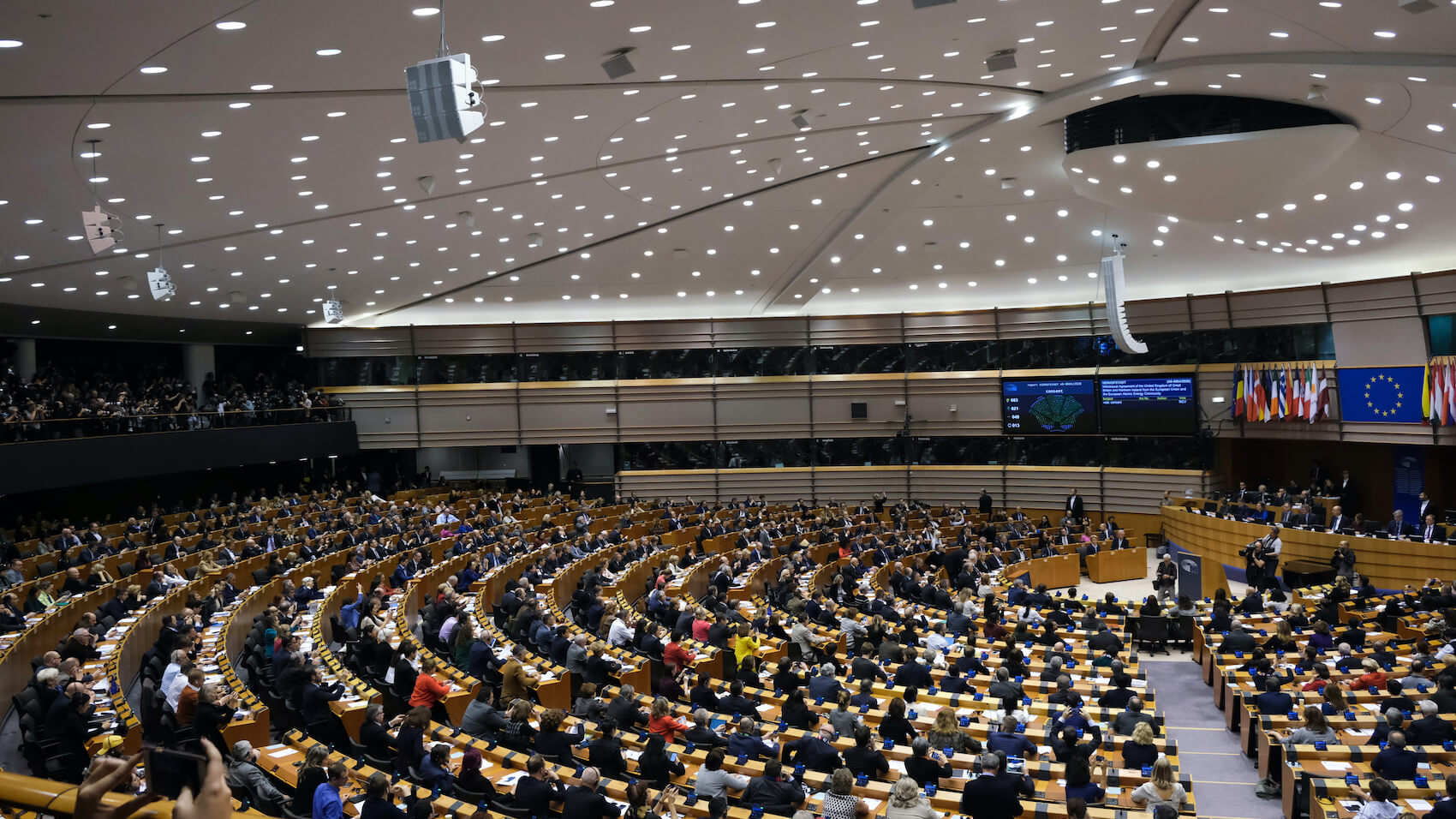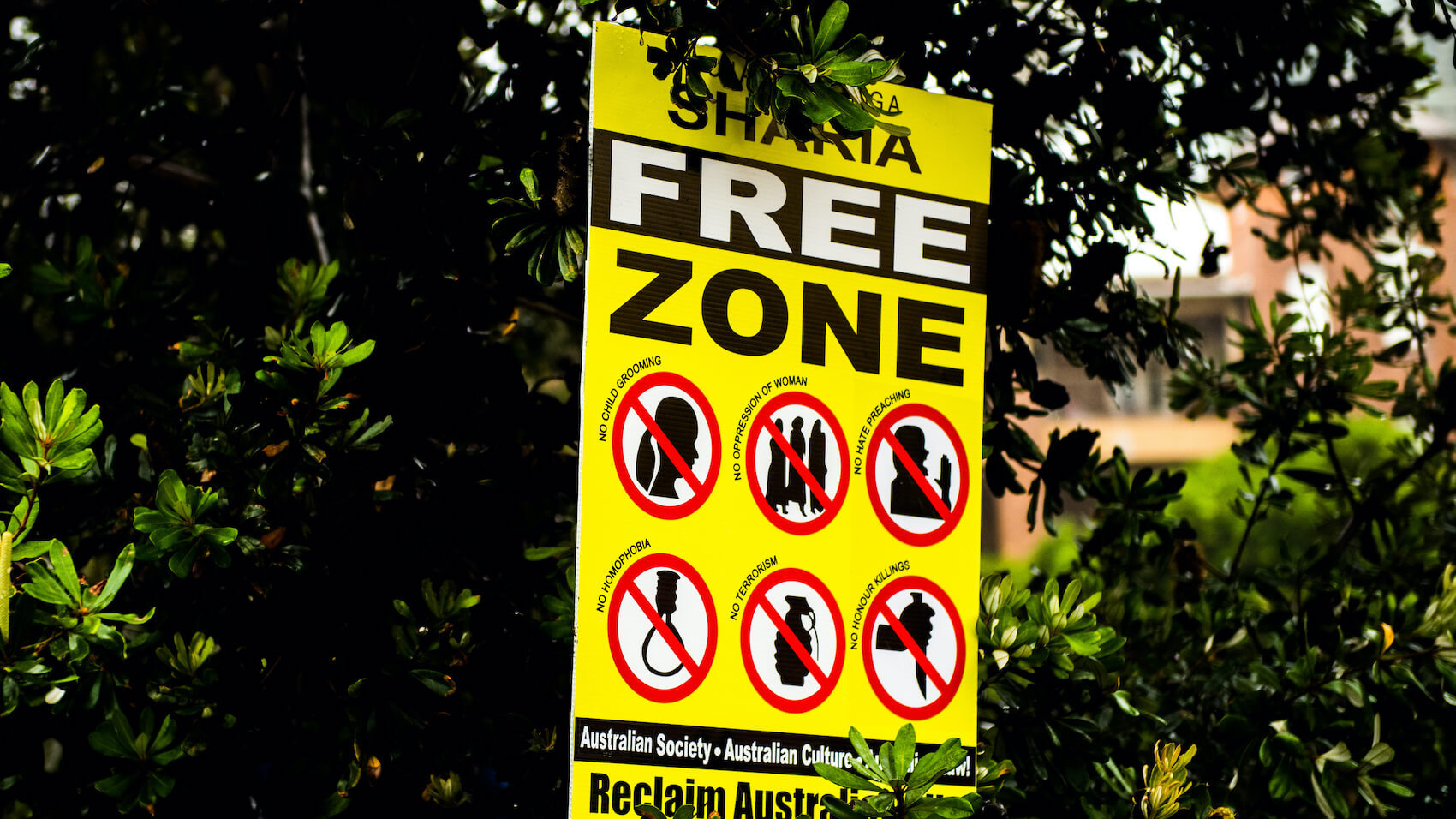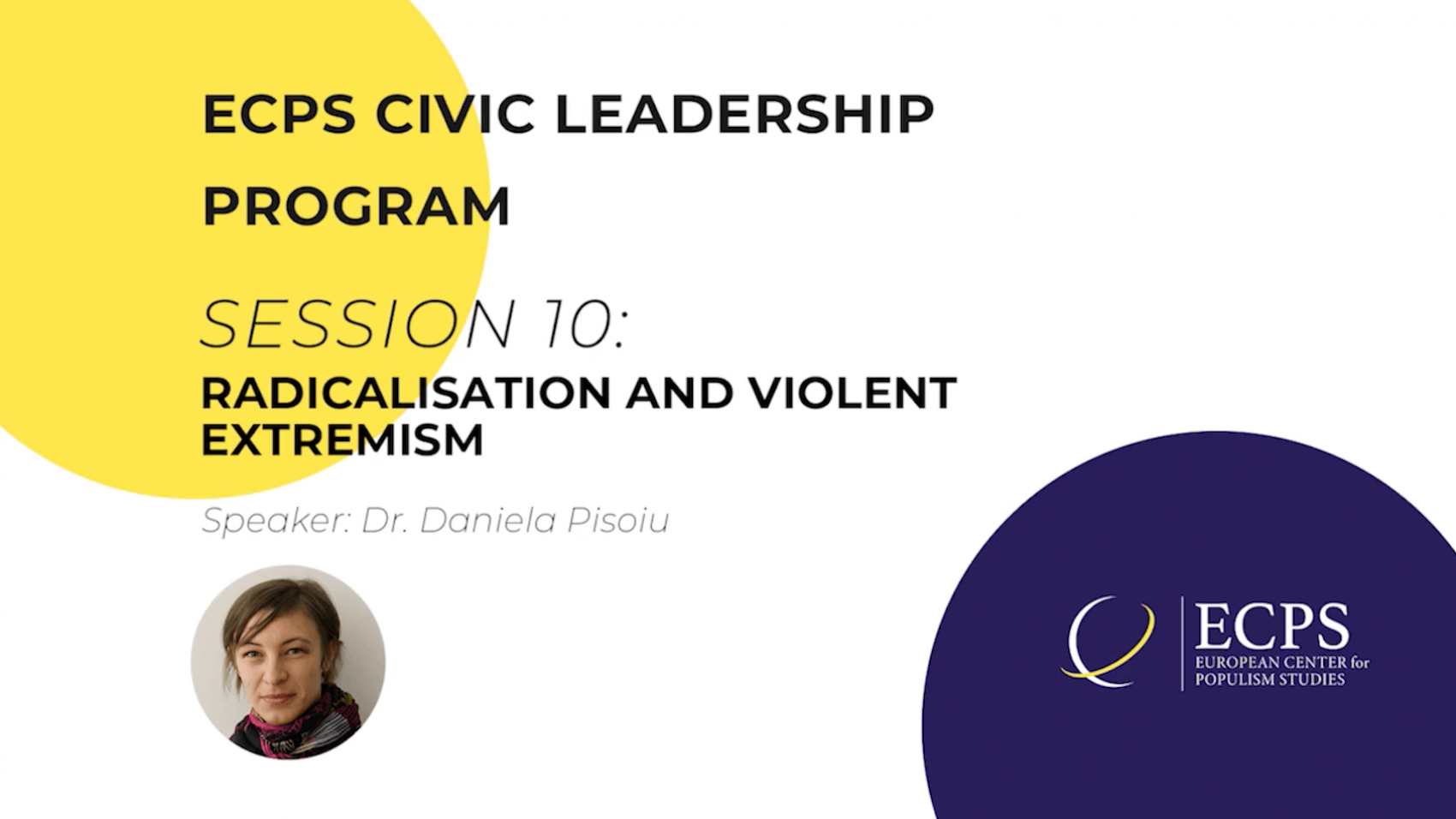Conflict constitutes an essential part of a healthy democratic society and should not be eradicated from it. Nevertheless, the “others” must not be intended as enemies to destroy but as adversaries whose ideas can be fought – even with ferocity – without ever questioning their right to defend them. Adopting a “competitive struggle” – as Chantal Mouffe calls it – implies mutual consensus towards institutions and socio-political values, even if it allows political actors to disagree on them, in the light of a “conflicting consensus.”
By Luca Mancin
According to social identity theory (Tajfel & Turner, 1986), societal and political environments are characterized by contentions and intra-groups relations. Politics does not make an exception with its long tradition of struggles and conflicts that gave birth to the so-called antagonistic paradigm (Schmitt, 1996), namely a political hostility that cannot be solved but through a mortal dispute. Though antagonism it can be softened and transformed into what Chantal Mouffe (2013) calls democratic agonism, where dissensus is present but the opposition occurs within shared values and pluralism is safeguarded.
By applying democratic agonism to the integration of the European Union (EU), focusing specifically on post-functionalism, it is unavoidable to deal with the broad concept of Euroscepticism, namely a critical and opposing attitude toward the EU’s economic and political integration. More specifically, this commentary investigates how a democratic agonism among softened Eurosceptic parties within the European Parliament can represent a remedy to the EU democratic deficit. Post-functionalism, indeed, tackles European integration from a national outlook. Hence it is a pluralistic and variegated approach to the EU affected by cultural and socio-political differences by mirroring potential incompatibilities of European politics. Might Mouffe’s democratic agonism precisely offer a solution to overcome such obstacles by promoting a pluralistic image of European politics through a pluralism of peoples and cultures within shared socioeconomic and political values?
The Democratic Agonism Paradigm
‘Why do you kill me?’
‘What! Do you not live on the other side of the water? If you lived on this side, my friend, I should be an assassin, and it would be unjust to slay you in this manner. But since you live on the other side, I am a hero, and it is just.’
This sentence, contained in Blaise Pascal’s Thoughts (2011: 51), perfectly describes the human attitude to categorizing the social world in a dichotomic manner. After all, Sigmund Freud as well, in Civilization and Its Discontents (1930: 114), wrote that “It is always possible to bind together a considerable number of people in love, so long as there are other people left over to receive the manifestations of their aggressiveness.” A claim that recalls what Carl Schmitt (1996) argued about the Manichean structure of politics that relies on the contraposition between “friend” and “enemy.” Such behavior is also observable in the social identity theory elaborated by Tajfel & Turner (1986). According to this model, people create us/them divisions in their social environment and behave in the function of their membership group.
Social identity theory relies on three steps. First, people categorize themselves and identify two parties – the in-group (“us”) and the out-group (“them”); secondly, the in-group’s members adopt the features that are believed to characterize that group; finally, the in-group compares itself with the out-group by exalting themself and belittling the other.
As anticipated above, the Manichean division between “us” and “them” is central in Schmitt’s (1996) work. The German philosopher maintained the crucial political distinction between “friend” (Freund) and “enemy” (Feind). Therefore, for him, the political enemy is “the other” or “the stranger” (der Fremde). The concept of enemy regards a group of people fighting and opposing – it is the Greek πόλεμος (pόlemos) or the Latin hostis (the public enemy). According to Schmitt, then, “the political” has two characteristics: 1) a polemical component embodied by a concrete conflict, and 2) the identification of “politician” in the sense of a political party.
The “us” versus “them” dichotomy is one of the main features of Eurosceptic and populist parties – as suggested by Cas Mudde (2004), who described populism as an opposition between “the pure people” and “the corrupt elite.” Manichean rhetoric polarizes citizenship and orients it towards a common enemy by finding a suitable scapegoat for each problem (Banning, 2006). We often notice this strategy investigating Eurosceptic and populist vocabulary and discourses, which propose an undetermined people opposed to a vague elite – the EU, the establishment, the bankers. So, an antagonistic approach allows citizens to identify a common enemy, but it denies any chance of constructive criticism and political compromise since it does not consent to establishing a fruitful political debate. Then, it is essential to find an agonistic alternative that permits dialogue and institutionalization of the conflict.
With this in mind, we draw on Chantal Mouffe’s (2013) work, which produces sublimation and institutionalization of Schmitt’s antagonism – which does not allow space for a confrontation between the two contenders that is not deadly. By contrast, Mouffe’s solution aims to overcome the limitations of a mortal political conflict by moving it into a political arena regulated by shared values and principles within institutions. By doing this, Mouffe proposes an agonistic model of democracy, whose purpose does not consist of reaching a consensus without exclusion because that would involve a “we” without a “them” – which is impossible. Mouffe recalls the idea of “radical negativity” – a form of negativity impossible to overcome and that prevents the full achievement of objectivity. Such radical negativity leaves open the possibility of an antagonism: recognizing the existence of radical negativity means recognizing the multiplicity and the divisions of the people. Societies cannot overcome such divisions but only institutionalize them.
Mouffe’s model of political society has its roots in the concepts of “antagonism” and “hegemony.” Antagonism indicates a conflict with no rational solution, while hegemony describes every society’s constitutive and ineliminable negativity. The hegemonic feature of human communities involves that every social order relies on a contingent articulation of power relations without an ultimate rational foundation. Consequently, societies are always the product of a series of practices attempting to establish a determined order in a contingent context. Hence, Mouffe declares that the central political issue consists of establishing an oppositional us/them compatibly with a pluralistic acceptance. The conflict constitutes an essential part of a healthy democratic society and should not be eradicated from it. Nevertheless, the “others” must not be approached as enemies to destroy but as adversaries whose ideas can be fought – even with ferocity – without ever questioning the right to defend. Adopting a “competitive struggle” – as Mouffe calls it – implies mutual consensus towards institutions and socio-political values, even if it allows political actors to disagree, in the light of a “conflicting consensus.”
But what happens if we apply Mouffe’s democratic agonism to European integration theories?
European Integration and Democratic Deficit
Integration theories analyze how to increase political cooperation within the EU by dealing with the EU integration results and the development of its institutions (Diez & Wiener, 2018). Among the several diversified EU integration theories, the post-functionalist outlook is relevant for this commentary. Such a theory, elaborated by Hooghe & Marks (2009), tackles the European Union from the national level of member states by stating that their domestic level politics shapes and affects EU integration and politicizes EU policies. The focus, the authors argue, is precisely on the conflicts at the level of the national citizenry, which constitute the driving forces of European integration.
Indeed, post-functionalism has spread after the Maastricht Treaty in 1992 and runs parallel to the shift from a “permissive consensus” to a “constraining dissensus” (Hooghe & Marks, 2009). By this term, scholars mean the greater awareness of citizens concerning European issues in the post-Maastricht Treaty period, followed by a broader politicization of the EU’s matters. Such a mutation has been a critical turning point for the European integration process, coinciding with the normalization of Eurosceptic parties (Bijsmans, 2020; Brack & Startin, 2015), which exploited the decrease of EU support and the increase of room for manifesting such a discontent (de Vries & Edwards, 2009). Besides, the diffusion of post-functionalism highlights the growing issue of the EU democratic deficit by making popular discontent concerning EU-related issues heard through national politics.
Whether the European Union is democratic or not raises broad debates (Beetham & Lord, 1998; Schmidt, 2006). The democratic deficit is the idea that “EU institutions and their decision-making procedures suffer from a lack of democracy and seem inaccessible to the ordinary citizen due to their complexity” (EUR-Lex)[1]. Such a democratic deficit might have different causes (the lack of genuine representative democracy in the EU, the absence of a common European demos, and the democratic deficit at the national level). Some scholars argue that the EU needs more profound politicization to create political debate to overcome the democratic deficit (Bellamy & Kroger, 2013; Føllesdal & Hix, 2006). These suggestions might entail pan-European elections, the President of the European Commission elected by the European Parliament, or a broader Europeanization of the public sphere. By contrast, other scholars maintain that the EU is as democratic as it could/should be because it aims to produce Pareto-efficient outcomes (Majone, 1994; Moravcsik, 2008). Namely, the EU creates a situation where the allocation of resources is such that improvements cannot be made to the system (i.e., the condition of one person cannot be improved without worsening the condition of another).
A general image of the EU’s democratic deficit, its causes, and potential remedies allows us to investigate whether the increasing number of softened Eurosceptic parties improved the democratic environment of the European Parliament – in terms of debates and participation – by producing a “democratic agonism.” Indeed, Chantal Mouffe (2013) considers it one of the possible solutions for the future of the EU integration since it would preserve the pluralism of identities and allow a “conflicting consensus” within the shared and common values of the Union.
Softened Euroscepticism as a Remedy to EU Democratic Deficit
Addressing the EU democratic deficit through Euroscepticism requires orientating within the complex and vague field of this topic (Szczerbiak & Taggart, 2017). Taggart has generally defined Euroscepticism as “the idea of contingent or qualified opposition, as well as incorporating outright and unqualified opposition to the process of European integration” (1998: 366). Taggart & Szczerbiak (2002) elaborate a further differentiation between “hard” and “soft” Euroscepticism. The first term indicates an opposition per se to the EU, while the second one depicts a qualified opposition to the EU – namely, a rejection of specific integration fields. However, as Kopecky and Mudde (2002) point out, it is still a too broad definition.
While these two broad categories represent necessary starting points, it is crucial to offer more specific definitions of the soft version to tackle this issue properly. Hence, I argue we should consider the category of “Eurorealizm” or softened Euroscepticism by referring to a political position that has been named in two different ways within the literature of this field. One is the term “Europragmatizm” (Kopecky & Mudde, 2002), which depicts a positive attitude towards the ideological image of the EU, but also an opposition to the principles of the European integration process. Similarly, such a political habit recalls the term “revisionist” (Flood & Usherwood, 2005), namely the desire to return to earlier stages of the EU. Finally, concerning Vasilopoulou’s (2011) work, we can consider such a position as a “conditional Euroscepticism” since it accepts a cultural definition of Europe and is aware of the importance of multilateral cooperation at the EU level but rejects the current EU’s political practice and future integrational steps.
Once we have defined what we mean here by softened Euroscepticism, we can examine how these stances can represent a (partial) remedy to the EU democratic deficit. It is essential to draw on Milner (2000), who talks about “healthy scepticism,” considering Euroscepticism as a litmus test for the awareness of critical citizenry concerning the EU’s issues. More recently, De Wilde & Trenz (2012) reconduct Euroscepticism to the EU’s integration process by stating that it is a natural element of the opposition to the European political project. Besides, it embodies a contestation of the European polity, and it might help address problems about sovereignty, democratic deficit, and responsiveness by being part of the more extensive process of legitimation and democratization of the Union. For this reason, Brack & Startin (2015), analyzing how Euroscepticism is currently a mainstream aspect of European politics, ask whether it can help in terms of a remedy to the EU democratic deficit. The literature offers two answers to this question. Firstly, Brack & Costa (2017) maintains that Eurosceptic conflicting opinions inside the European Parliament show the high degree of democratic pluralism of the Union itself. Secondly, Krouwel & Abst (2007) underline the positive aspect of populist Eurosceptic parties in the European Parliament since these actors represent a stimulus for an active citizenry. After all, a healthy democracy relies on political contestation and critics, and, to a certain extent, Euroscepticism triggering political discontent can reveal itself as a positive aspect of a democratic regime.
Such theoretical statements find a practical realization in contemporary general Eurosceptic parties’ tendency to soften their position and take up a position of what we defined above as “Eurorealism” (Balfour et al., 2019; Taggart, 2019). In other words, nowadays, Eurosceptic parties are still critics of the European Union but do not assess the exit from the EU as a feasible solution. Here, looking at the question of Eurorealism and examining whether it can fuel democratization of the EU through Mouffe’s (2013) democratic agonistic paradigm implies a European Parliament with a pluralistic trim, where conflicts are present and essential but regulated within shared values and principles. The transposition into the European Studies literature of Mouffe’s approach can be traced in Nicolaïdis’ (2004) concept of “demoi-cracy.” By this term, he means a combination of pluralistic nations and peoples working together to overcome the democratic problems in the EU but maintaining their essential socio-cultural differences and ideological divergences. Only through the maintenance of these unavoidable and natural “geo-philosophical faults” – as the Italian philosopher Massimo Cacciari calls them (1994 & 1997) – it is possible to safeguard the “field of conflicting forces”, as the Polish philosopher Krzysztof Pomian once described Europe.
Conclusion
This commentary applied Mouffe’s theory on democratic agonism (2013) to post-functional theories of European integration. It argued that approaching Euroscepticism through the lens of democratic agonism rather than antagonism shows how pluralism and shared values can address the EU democratic deficit. In particular, it was argued that democratic agonism would allow the increasing number of softened Eurosceptic parties to elaborate constructive criticism toward the Union’s trim without menacing an exit of their member states from the EU. Such a solution would safeguard cultures and peoples’ pluralism in what Nicolaïdis (2004) called “demoi-cracy” and constitute a compromise for the “conflicting forces” featuring the European Union politics. In the EU, then, there would still be a “competitive struggle,” not between “friends” and “enemies,” but between adversaries whose positions can be fought but must be respected in the light of a “conflicting consensus.”
References
Balfour, R.; Basagni, L.; Flotho-Liersch, A.; Fusaro, P.; Gelhaus, L.; Groenendaal, L.; Hegedus, D.; Von Homeyer, H.; Kausch, K.; Kutschka, T.; Matrakova, M.; Rempala, J.; & Tani, K. (2019). Divide and Obstruct: Populist Parties and EU Foreign Policy. German Marshall Fund of the United States.
Banning, M. E. (2006). “The Politics of Resentment.” JAC, 26(1/2), 67–101. http://www.jstor.org/stable/20866722
Beetham, D., & Lord, C. (1998). Legitimacy and the European Union. London: Longman.
Bellamy, R., & Kröger, S. (2013). “Representation Deficits and Surpluses in EU Policy-making.” Journal of European Integration, 35(5), 477-497.
Bijsmans, P. (2020). “Euroskepticism, a multifaceted phenomenon.” In: Oxford Research Encyclopedia of Politics. Oxford University Press.
Brack, N., & Costa, O. (2017). “Transnational and Pan-European Euroscepticism.” In: B. Leruth, N. Startin & S. Usherwood (Eds.). The Routledge Handbook of Euroscepticism (pp. 551-569). Routledge.
Brack, N, & Startin, N. (2015). “Introduction: Euroscepticism, from the margins to the mainstream.” International Political Science Review, 36(3), 239–249.
Cacciari, M. (1994). Geofilosofia dell’Europa [Geo-philosophy of Europe]. Adelphi.
Cacciari, M. (1997). Arcipelago [Archipelago]. Adelphi.
De Vries, C. E. & Edwards, E. E. (2009). “Taking Europe to Its Extremes: Extremist Parties and Public Euroscepticism.” Party Politics. 15(1), 5–28.
de Wilde, P. & Trenz, H.J. (2012). “Denouncing European integration: Euroscepticism as polity contestation.” European Journal of Social Theory, 15(4): 537–554.
Diez, T. & Wiener, A. (2018). “Introducing the Mosaic of Integration Theory.” In: A. Wiener & T. Diez (Eds.), European Integration Theory (pp. 1-24). Oxford University Press.
Flood, C. & Usherwood, S. (2005). Positions, Dispositions, Transitions: A model of Group Alignment on EU Integration. Paper presented at the 55th Annual Conference of the Political Studies Association University of Leeds, 5-7 April 2005.
Føllesdal, A. & Hix, S. (2006). “Why There is a Democratic Deficit in the EU: A Response to Majone and Moravcsik.” Journal of Common Market Studies, 44(33), 533–562
Freud, S. (1930). Civilization and its Discontents. The Standard Edition of the Complete Psychological Works of Sigmund Freud, Volume XXI (1927-1931). The Future of an Illusion, Civilization and its Discontents, and Other Works, 57-146. Available at: https://www.sas.upenn.edu/~cavitch/pdf-library/Freud_SE_Civ_and_Dis_complete.pdf
Hooghe, L., & Marks, G. (2009). “A Post-functionalist Theory of European Integration: From Permissive Consensus to Constraining Dissensus.” British Journal of Political Science, 39(1), 1–23.
Kopecky, P. & Mudde, C. (2002). “The Two Sides of Euroscepticism. Party Positions on European Integration in East Central Europe.” European Union Politics, 3(3), 297-326.
Krouwel, A. & Abts, K. (2007). “Varieties of Euroscepticism and Populist Mobilization: Transforming Attitudes from Mild Euroscepticism to Harsh Eurocynicism.” Acta Politica, 42, 252–270.
Majone, G. (1994). “The Rise of the Regulatory State in Europe.” West European Politics, 17(3), 77–101.
Milner, S. (2000). “Introduction: A Healthy Scepticism?” Journal of European Integration, 22(1), 1-13.
Moravcsik, A. (2008). “The Myth of Europe’s ‘Democratic Deficit’.” Intereconomics, 43(6): 331–340.
Mouffe, C. (2013). Agonistics. Thinking the World Politically. Verso.
Mudde, C. (2004). “The Populist Zeitgeist.” Government and Opposition, 39(4), 541–563. https://doi.org/10.1111/j.1477-7053.2004.00135.x
Nicolaïdis, K. (2004). “The new constitution as european “demoi‐cracy”?” Critical Review of International Social and Political Philosophy, 7(1), 76-93.
Pascal, B. [(2011) 1669]. The Thoughts of Blaise Pascal. The Online Library of Liberty. Available at: https://oll-resources.s3.us-east-2.amazonaws.com/oll3/store/titles/2407/Pascal_1409_EBk_v6.0.pdf
Schmidt, V. A. (2006). Democracy in Europe. Oxford University Press.
Schmitt, C. (1996). The Concept of the Political [1932]. Chicago University Press.
Szczerbiak, A. & Taggart, P. (2017). “Contemporary Research on Euroscepticism.” In: B. Leruth, N. Startin, & S. Usherwood (Eds.). The Routledge Handbook of Euroscepticism (pp. 45-60). Routledge.
Taggart, P. (1998). “A Touchstone of Dissent: Euroscepticism in Contemporary Western European Party Systems.” European Journal of Political Research, 33, 363-388.
Taggart, P. (2019). “Party-based hard Euroscepticism in the 2019 European parliament elections.” In: N. Bolin, K. Falasca, M. Grusel, et al. Euroflections: Leading academics on the European elections 2019 (p. 26). Demicom report no. 40. Sundsval: Mittuniversitetet.
Taggart, P. & Szczerbiak, A. (2002). Crossing Europe: Patterns of Contemporary Party-Based Euroscepticism in EU Member States and the Candidate States of Central and Eastern Europe. Paper prepared for presentation at the European Consortium for Political Research Joint Workshops, Turin, March 21-27, 2002.
Tajfel, H. & Turner, J.C. (1986). “The social identity theory of intergroup behavior.” In: S. Worchel & W.G. Austin (Eds). Psychology of intergroup relations. Nelson-Hall.
Vasilopoulou S. (2011). “European Integration and the Radical Right: Three Patterns of Opposition.” Government and Opposition, 46(2), 223-244.
[1] The definition is available at: https://eur-lex.europa.eu/summary/glossary/democratic_deficit.html.













